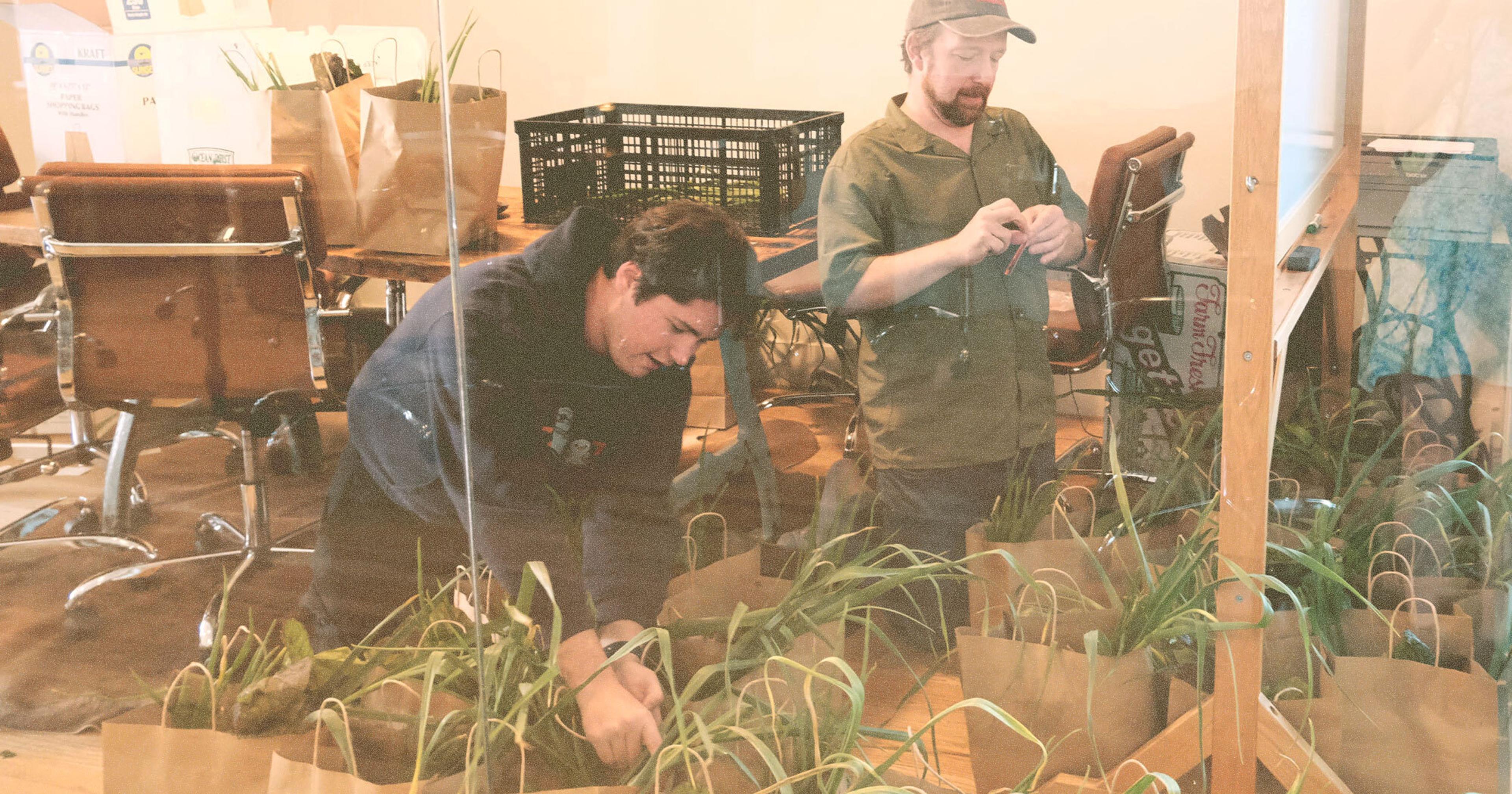How Ambrook built a culture of radical honesty.
I like feedback in the way everyone likes feedback: constant positive affirmation and validation. I’m joking (well, kind of). But it’s true that many of us carry a cultural aversion to honest feedback, especially at work. This is likely a mix of some people being uncomfortable delivering criticism and others taking it too personally.
The irony is that we all crave feedback. It’s the only real antidote to those pesky feelings of uncertainty: What do you actually think about me? How am I doing? How can I get better? And, just as importantly, it’s how we feel seen. After all, validation for effort and achievement can be equally powerful as critique for improvement.
At Ambrook, we’ve learned that real feedback becomes easier, more productive, and, dare I say, even enjoyable, when it’s embedded into the very way we communicate. It’s not just a singular event or a formality but rather a shared language and a daily habit. Our culture of radical honesty is built on three things:
A language toolkit: Learning how to give feedback clearly and empathetically.
Low ego: Staying open to feedback, regardless of your title or experience.
Reciprocity: Treating feedback as a conversation, not a one-way delivery.
These values show up everywhere: in how we train, how we communicate, and how we check in. I’d like to share a few of Ambrook’s feedback mechanisms that have helped us build a culture rooted in trust.
Learning to Talk About Hard Things: LiT Sessions
Our “LiT” (Leaders in Tech) sessions are where most Ambrookers first learn the language of feedback. Built on the framework founded by Carole Robin at Stanford GSB and developed into a program for startup founders and operators, Ambrook has adopted LiT as a more formal space for giving and receiving feedback, built around small, intimate groups of teammates who work closely together.
These sessions are structured as a feedback circle: Everyone gives feedback to one person at a time, and unlike in-the-moment feedback, you’re asked to wait until each person has fully shared before responding. While the format can sound intimidating, the majority of feedback shared is sincerely positive. My first LiT session took place in the backyard of my teammate Katie’s family ranch in Montana, a casual setting that made it easier to talk about difficult things. There, we practiced using phrases like:
“When I see you do X, I feel Y. The story I tell in my head about what’s going on is Z.”
LiT teaches that there are three realities: my reality, your reality, and our shared reality. I can only observe my reality and our shared reality — I have no idea what’s going on in your reality! But so many times, we use language that assumes we know what another person is thinking or feeling. That’s usually why people feel defensive — they could be misunderstood, or not like the identity you’ve asserted for them. Observe the difference between:
“You’re always upset when I do X.”
vs.
“When I do X, I notice you make a face. The story I tell in my head is that you’re upset. Is that true?”
By staying in your observed reality, and offering the other person a chance to clarify your assumptions, you’ve both been able to deliver feedback and do it in a way that minimizes the chance that someone else feels misunderstood or defensive. LiT calls this “staying on your side of the net.”
At first, this kind of language feels unnatural, almost like corporate therapy-speak. But I came to appreciate it, especially when giving constructive feedback that I worried could be interpreted negatively. It lets me describe my experience without assigning blame, which makes the conversation feel more open and less defensive. And when I’m on the receiving end, it is way easier to hear feedback when I know it isn’t loaded with assumptions. One of my favorite phrases that came out of LiT is:
“I feel strange math when you do X.”
“Strange math” describes those mixed, hard-to-articulate emotions that come from everyday interactions when something is both appreciated (+1) and frustrating (-1) at the same time. Critically, the strange math is that they don’t cancel each other out. Both are valid at the same time, and worth bringing up as feedback.
I felt this mix of emotions acutely during my team’s recent restructuring meeting. Part of me felt unsettled and unsure during the process, and I was thrown by how quickly everything shifted. But on the other hand, I was also grateful for the new clarity and the opportunity to articulate where and how I wanted to grow within my new team “pod.” This co-existing feeling of discomfort and gratitude is just one example of the many ways strange math can manifest.
Another useful concept is the “pinch” — a small, subtle twinge of discomfort that you may not yet have the words to fully describe. Pinches are easy to dismiss because you want to stay constructive, and without clear language it can feel simpler to say nothing. But they accumulate. Naming and raising small pinches in the moment prevents them from compounding into something larger and harder to work through later.
Feedback as a Habit: How Slack Shapes Communication
At Ambrook, feedback doesn’t just live in formal spaces like LiT: It shows up everywhere. LiT gives us a shared framework and vocabulary that naturally shapes our day-to-day interactions, often without us even realizing it. And because we care (a lot) about hiring genuinely empathetic, emotionally intelligent people, that foundation carries into every quick exchange, making informal feedback feel natural rather than daunting. You can see this most clearly in the habits and norms we’ve built on Slack.
We emphasize communicating in public channels rather than DMs. This transparency allows everyone to learn from each other whether they work in Marketing, Engineering, or Customer Success. We see everything from shoutouts to constructive callouts, where people surface issues or misunderstandings and work through them in the open.
This only works because of the shared ethos behind it:
Try not to assume negative intent.
Seek understanding before judgment.
Treat mistakes as part of the process of building something complex together.
When those norms are modeled by leadership, public communication stops feeling exposing and starts feeling empowering. I’ve learned not to take feedback personally and instead view it as a natural part of iterative improvement and personal development. And because this culture goes both ways, I also became comfortable giving honest feedback upwards — something that surely isn’t the norm everywhere!
Turning Feedback Into Support: Weekly 1:1s
Feedback also happens in smaller, more personal spaces. I have weekly 1:1s not just with my manager, but with several of my peers. These meetings range from structured check-ins to casual coffee walks near the office.
In my 1:1s with Paige, our Head of Customer Success, she’ll frequently start by asking: “What feels hard?”
It’s such a simple question, but it reframes “I’m struggling” into a safe invitation to problem-solve together. It shifts feedback from evaluation to collaboration and reminds me that we’re always on the same team. And in a distributed team, this matters (Paige and I work on opposite coasts). Managers can’t sense how I’m feeling unless it’s communicated, and my peers can’t support me without visibility. Practicing feedback regularly keeps that loop open in both directions.
How Feedback Builds Trust and Yields Better Results
Ultimately, the biggest outcome of a feedback-oriented culture is trust. And trust is what allows teams like ours to do hard things together; it also drives tangible results. Take Bug Day, a weekly initiative where our entire engineering team spends the day addressing customer pain points identified by the CX team. As Paige and Tom described in their article about it, Bug Day exists because of feedback both external (from customers) and internal (between teams).
Customer Success might prioritize a bug based on sentiment and impact, while Engineering has to weigh technical difficulty and bandwidth. Instead of competing priorities, feedback helps bridge perspectives. Regular syncs and open conversations create context and shared understanding, leading to faster problem-solving and better outcomes for everyone.
A culture of feedback isn’t built by mandating transparency or scheduling quarterly reviews. It stems from how we talk to each other, how we listen, and how we stay curious about what others experience. Feedback as a shared practice is what makes Ambrook a special place that allows us to do meaningful work — while also experiencing the kind of personal growth that’s rare to find at many companies.






